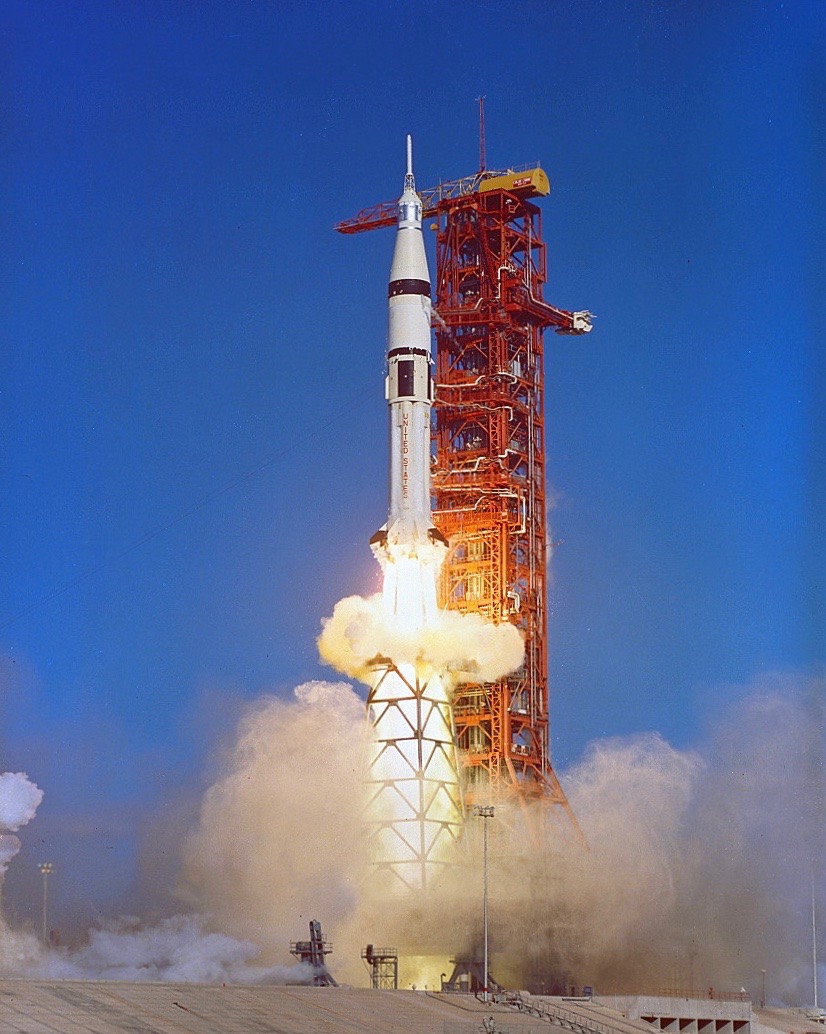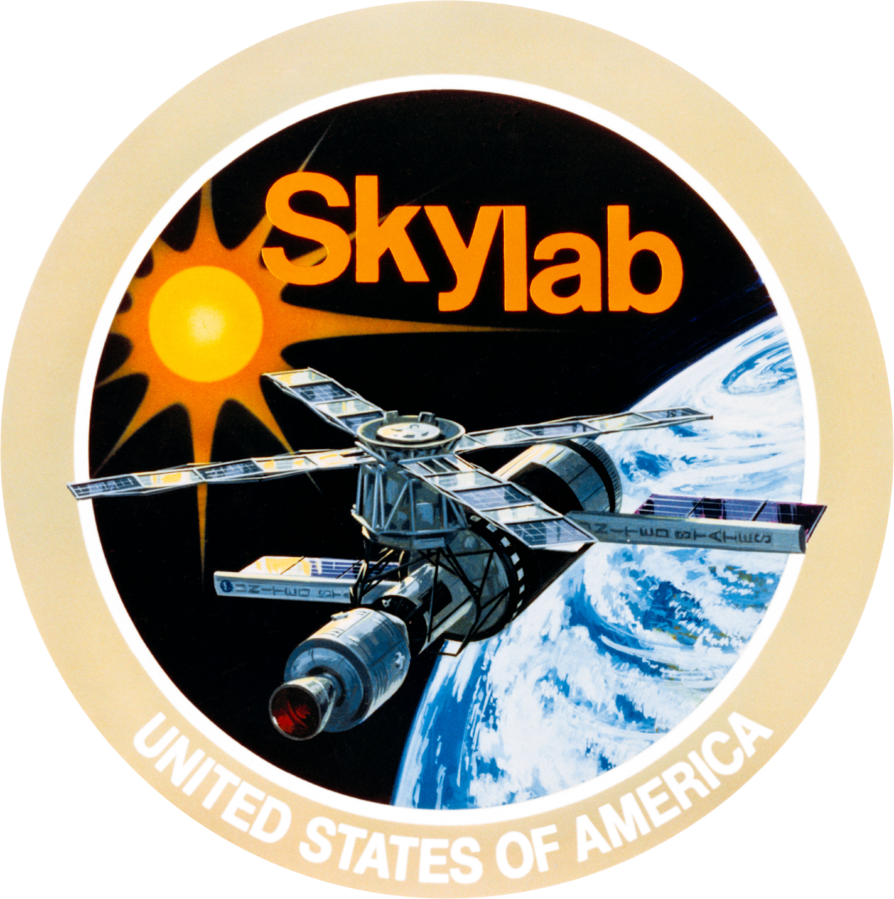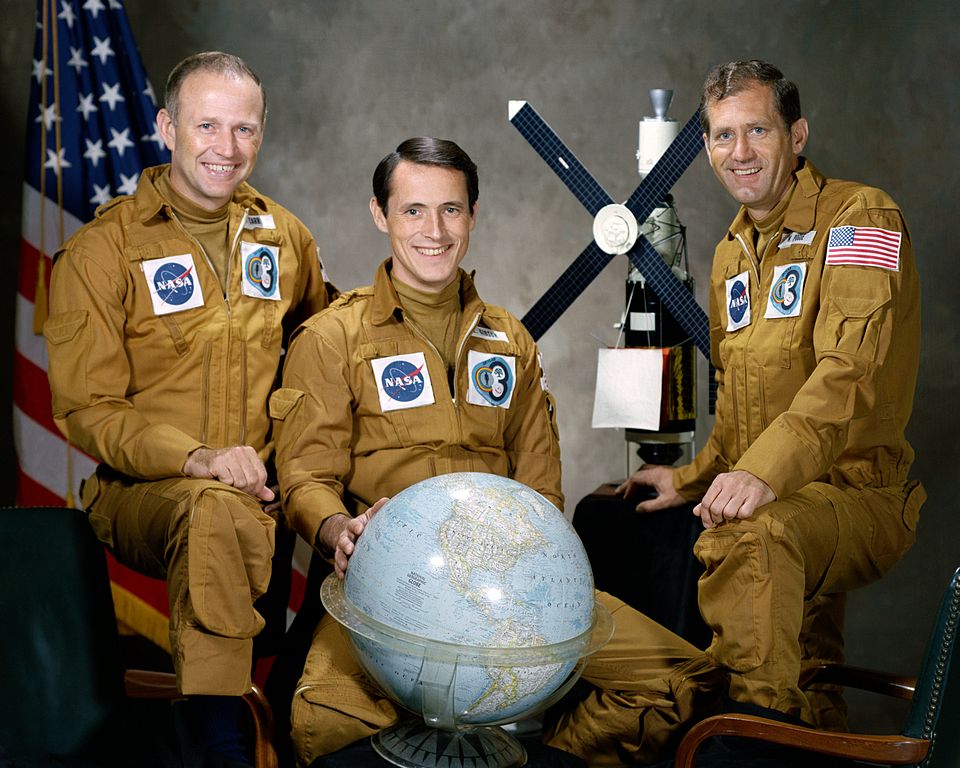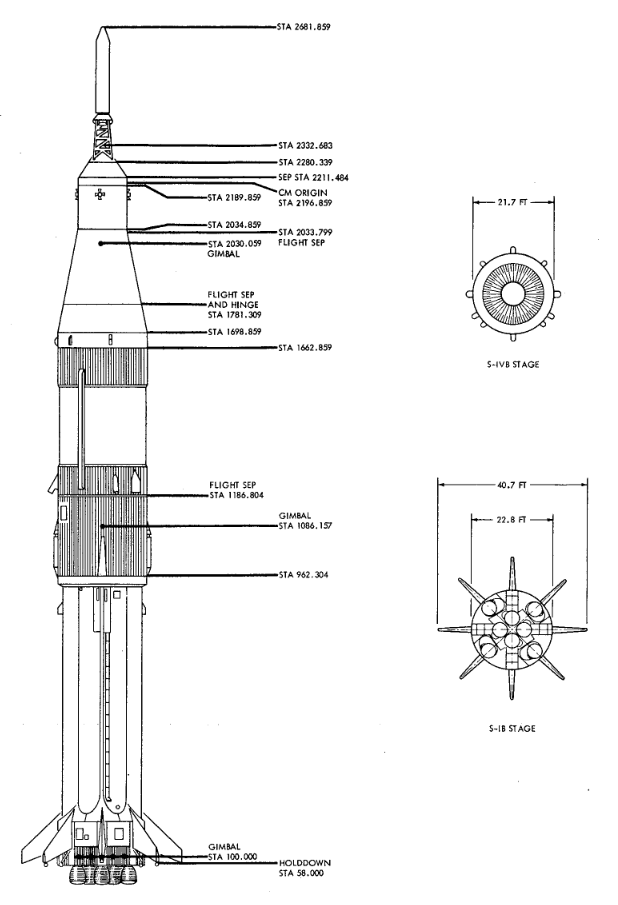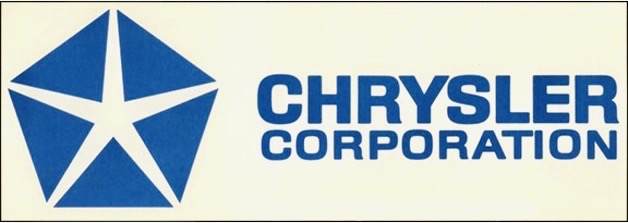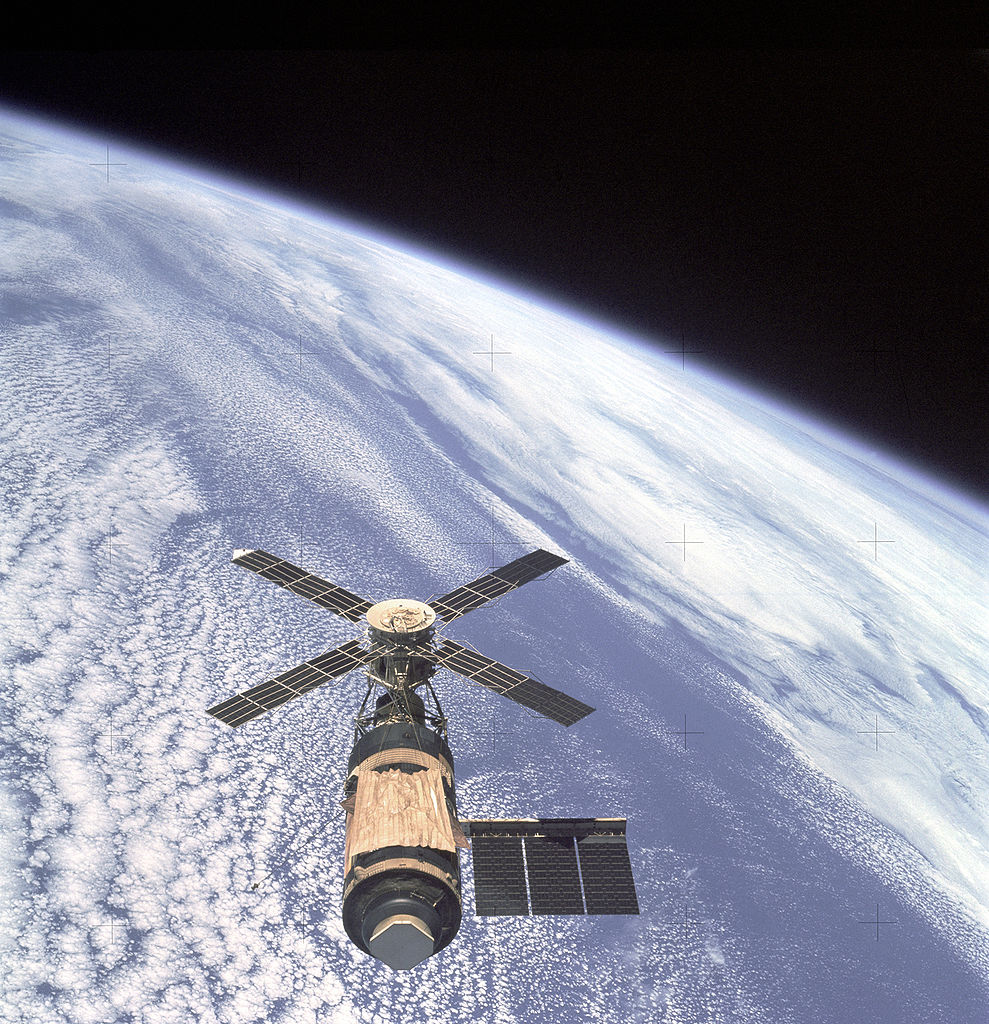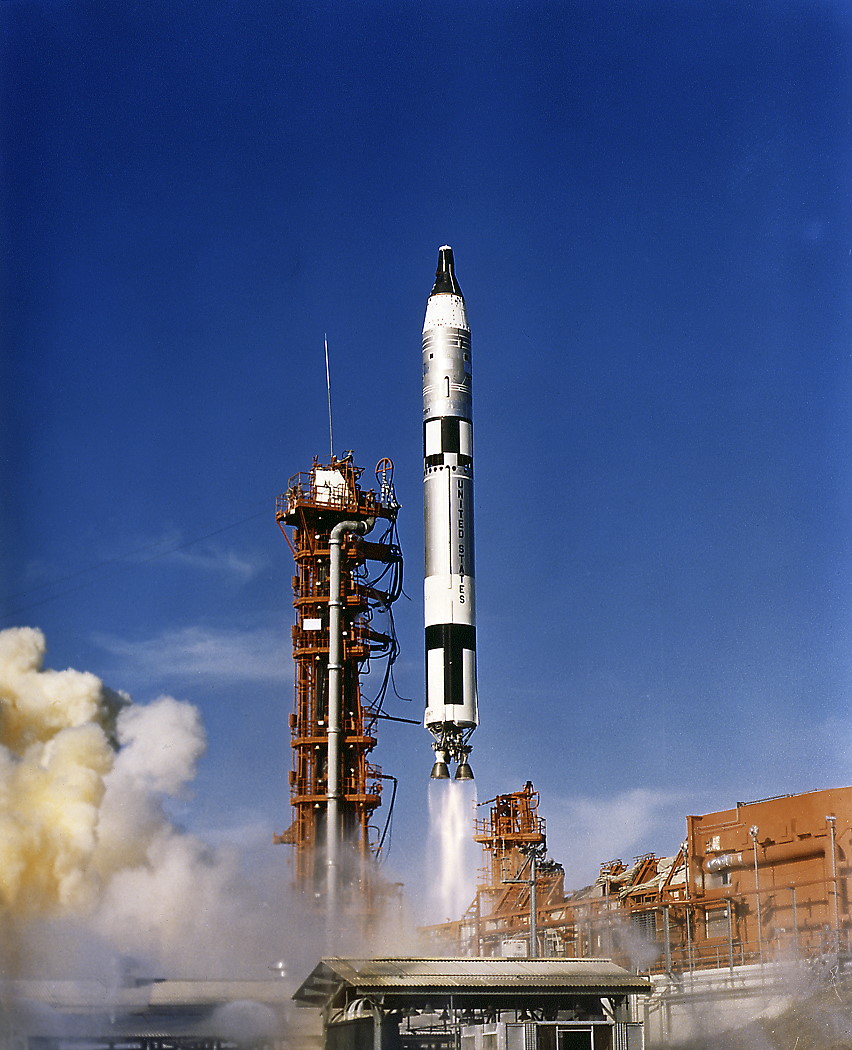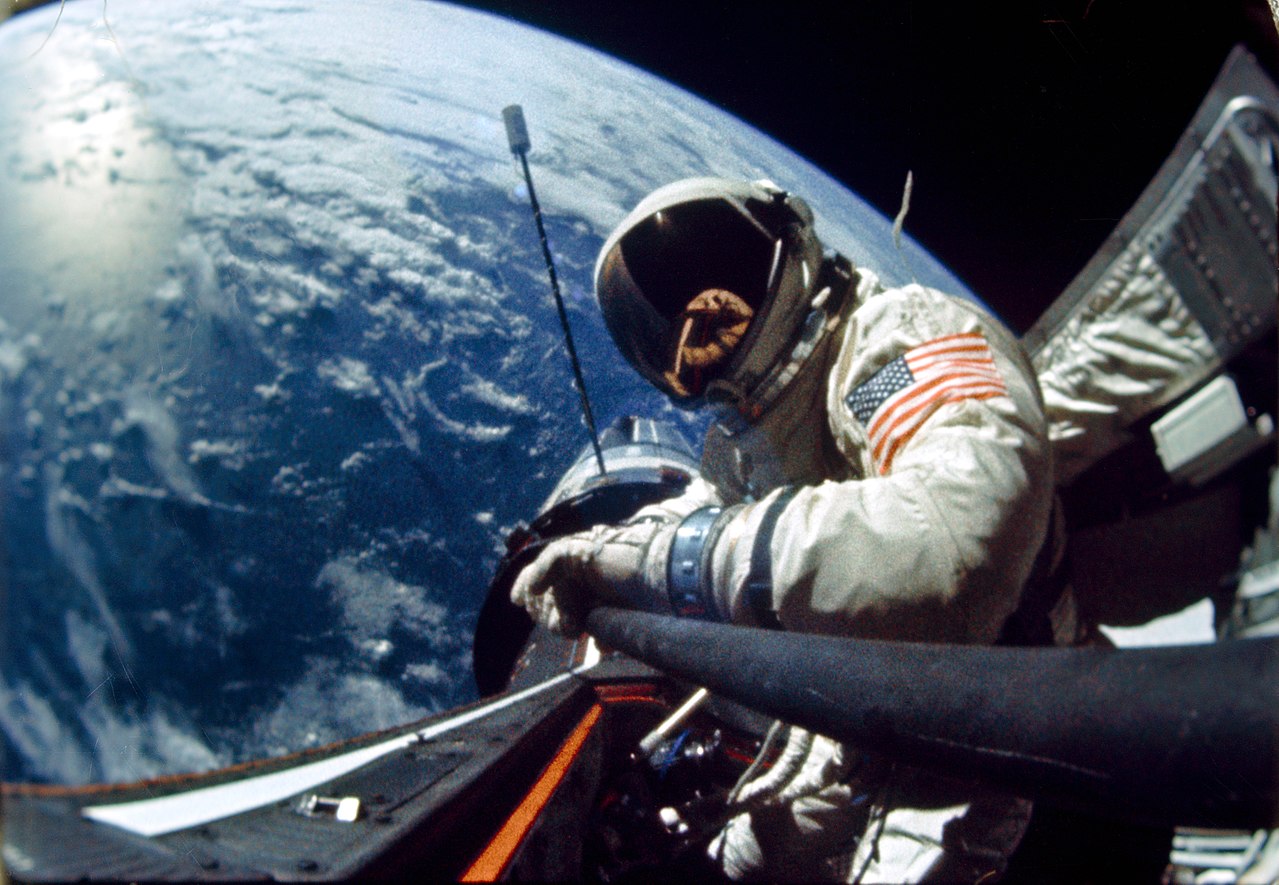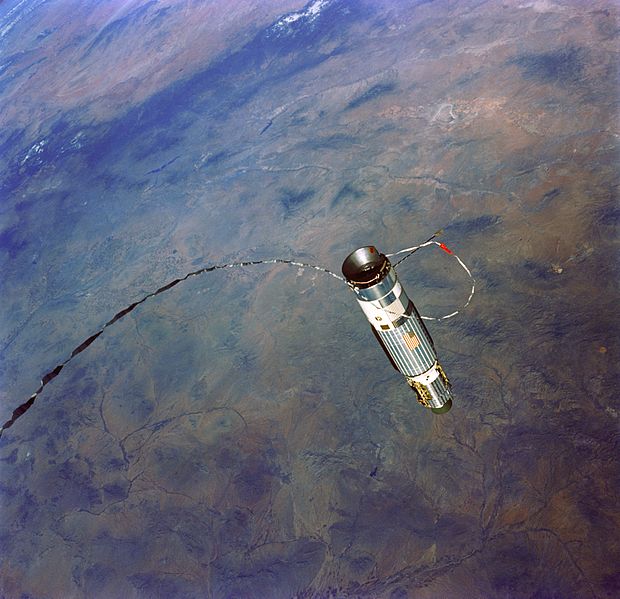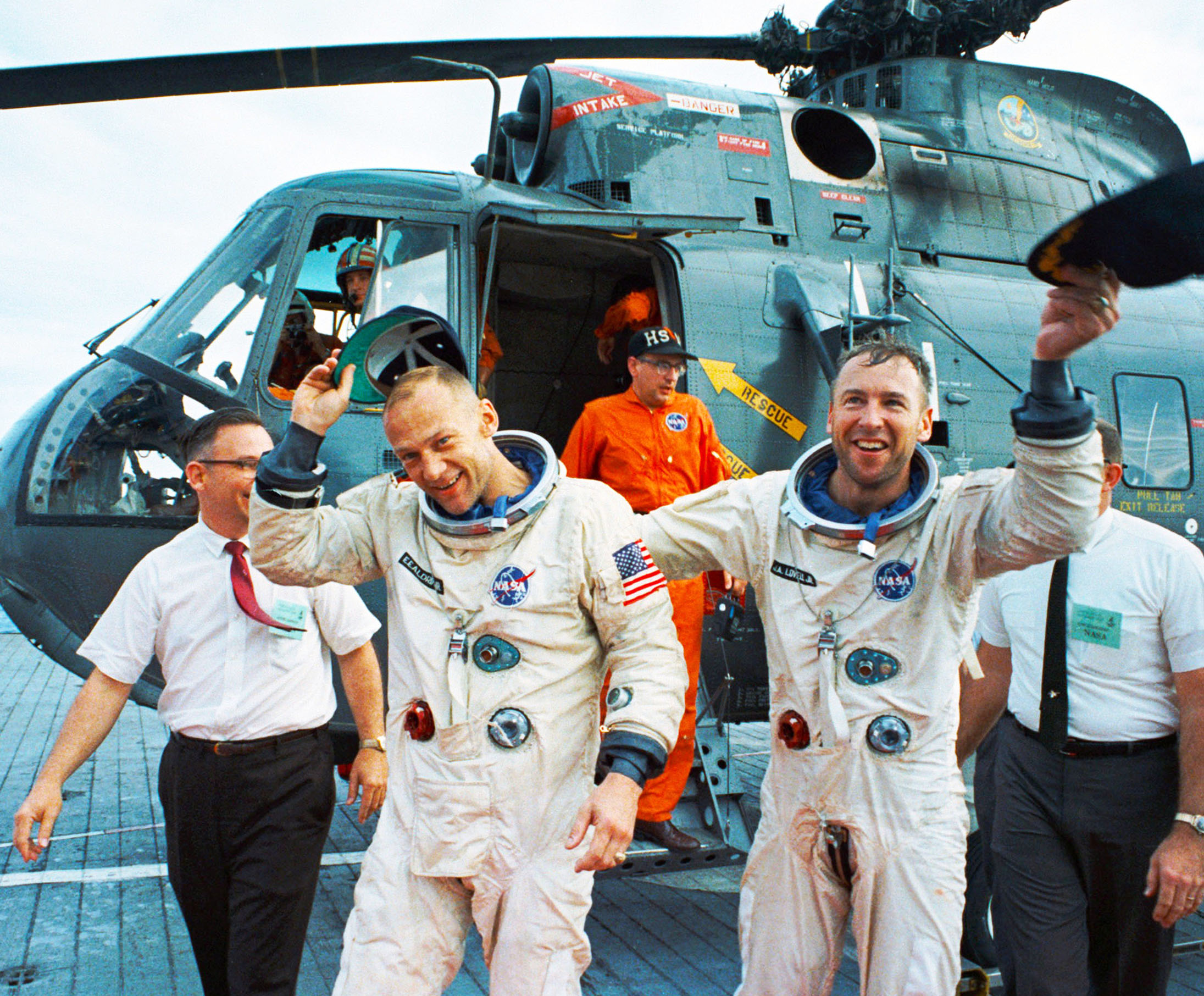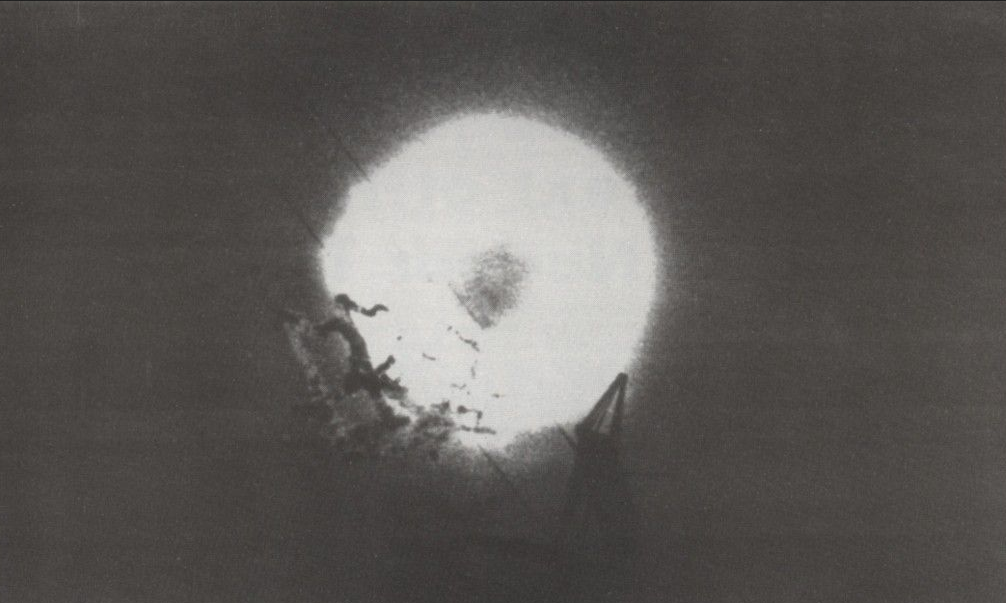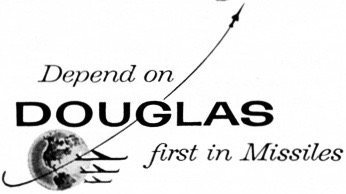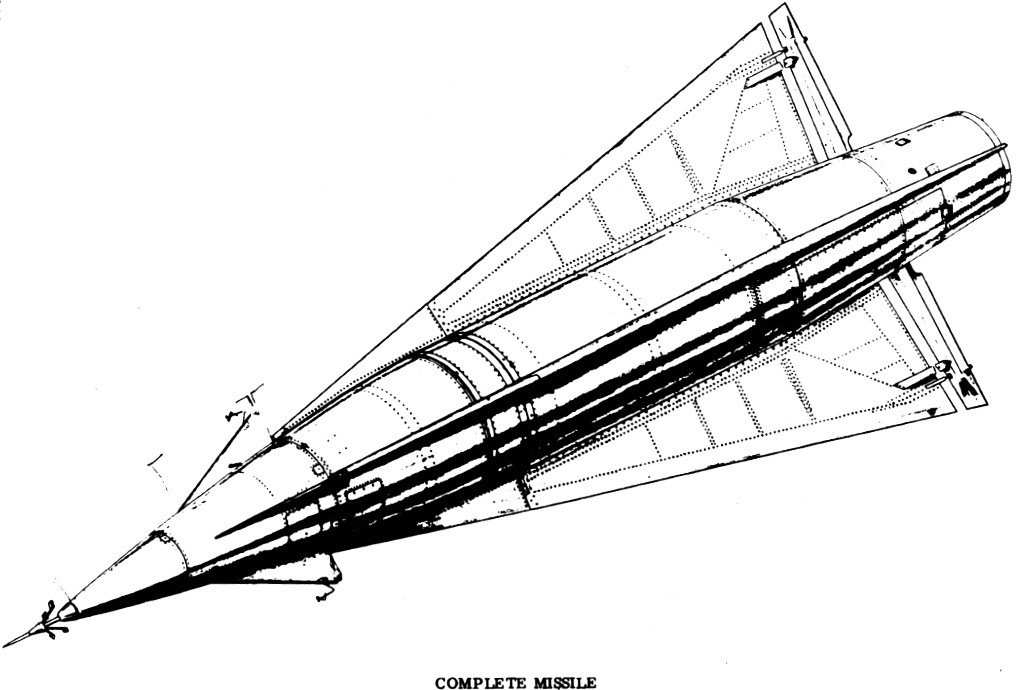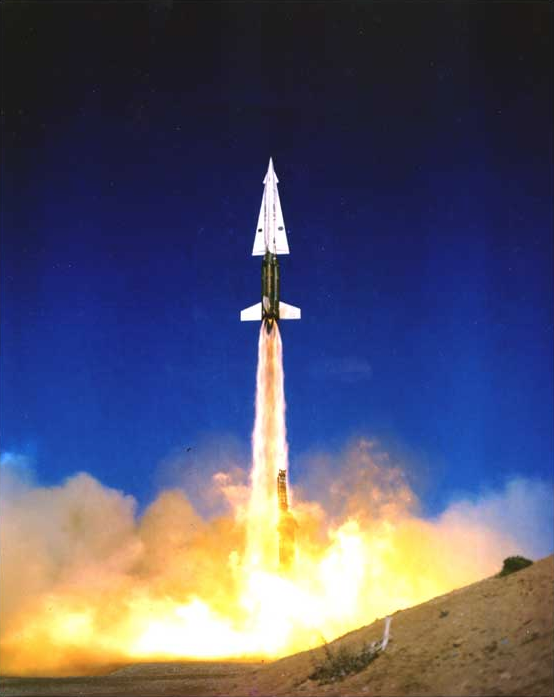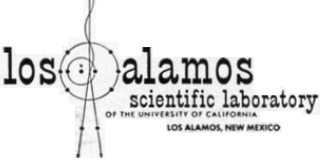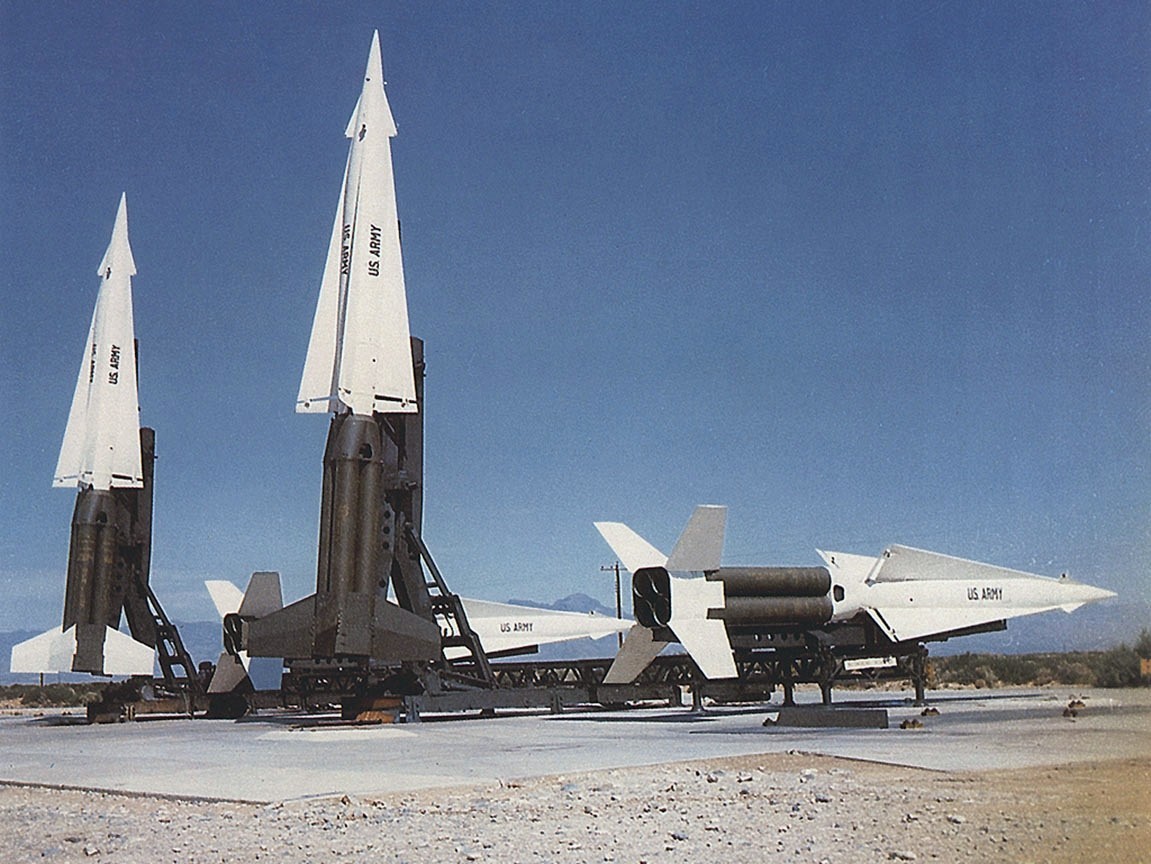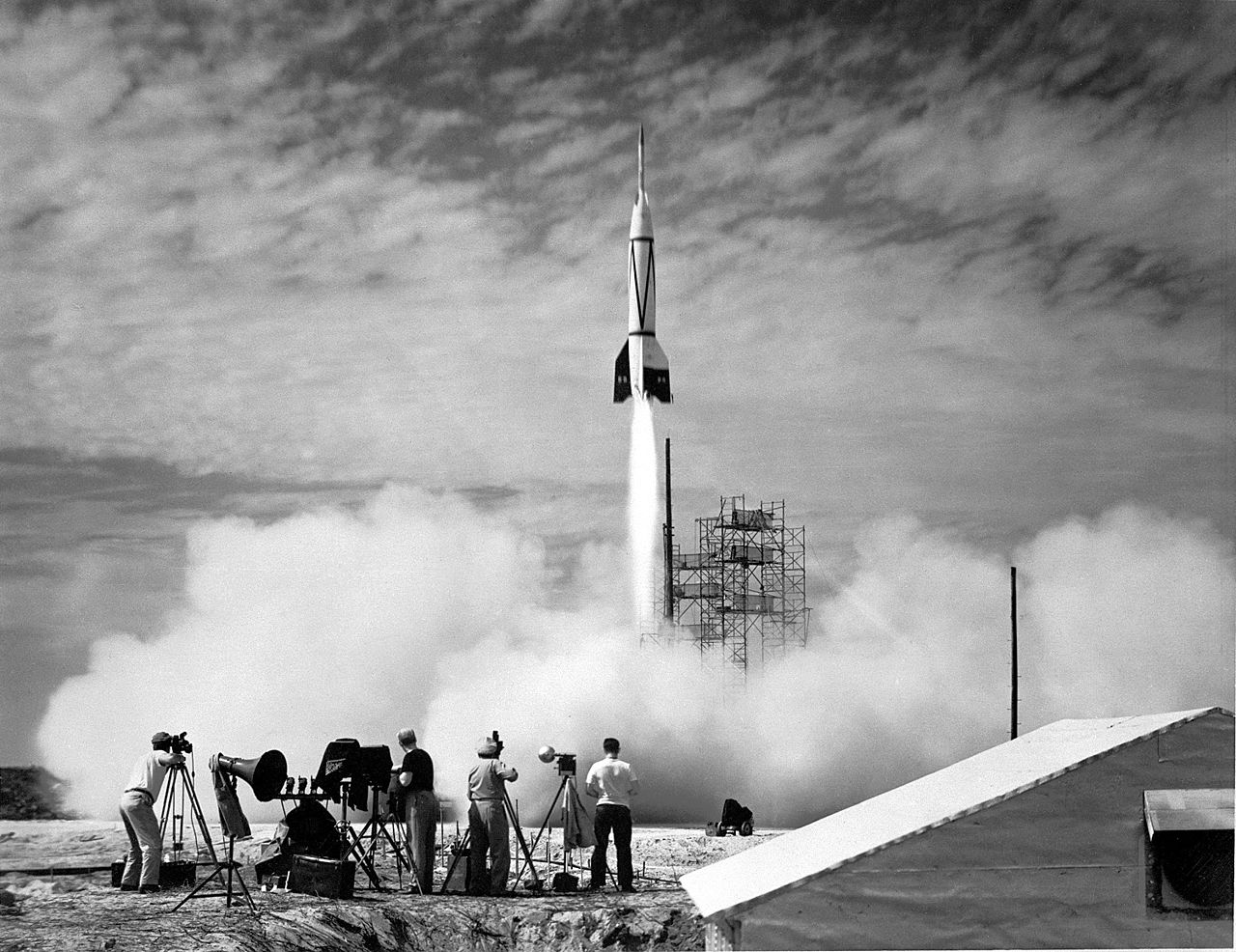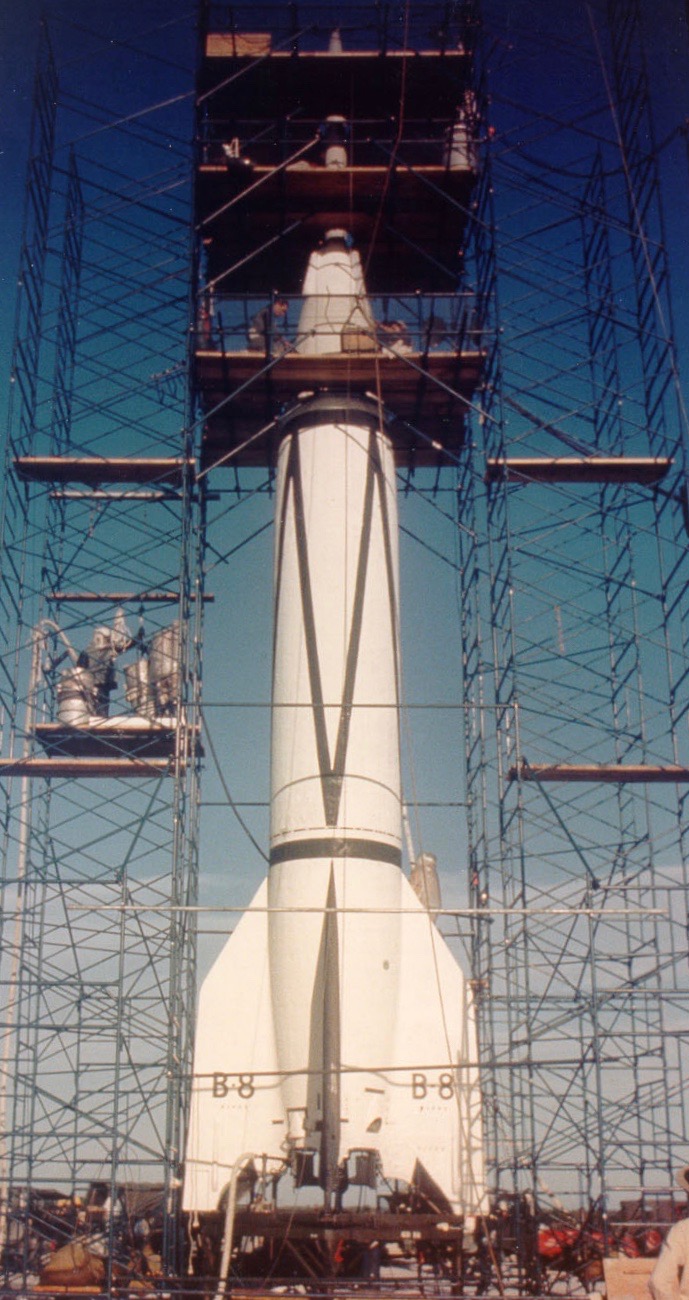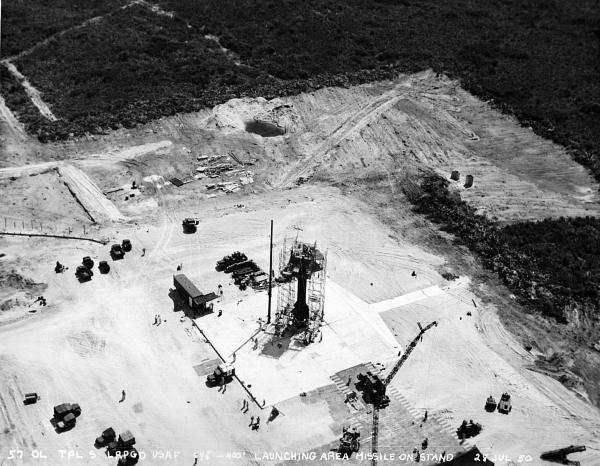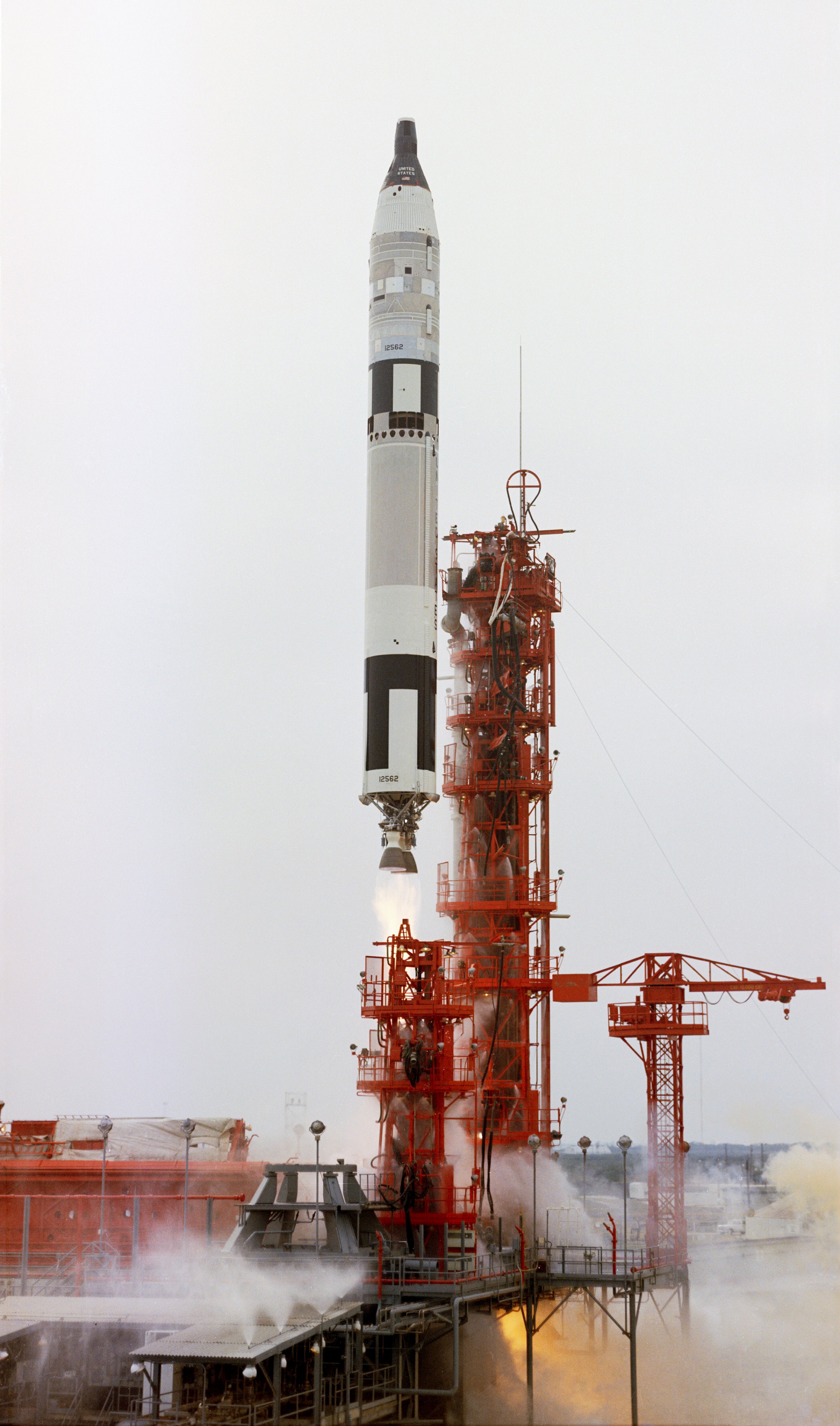
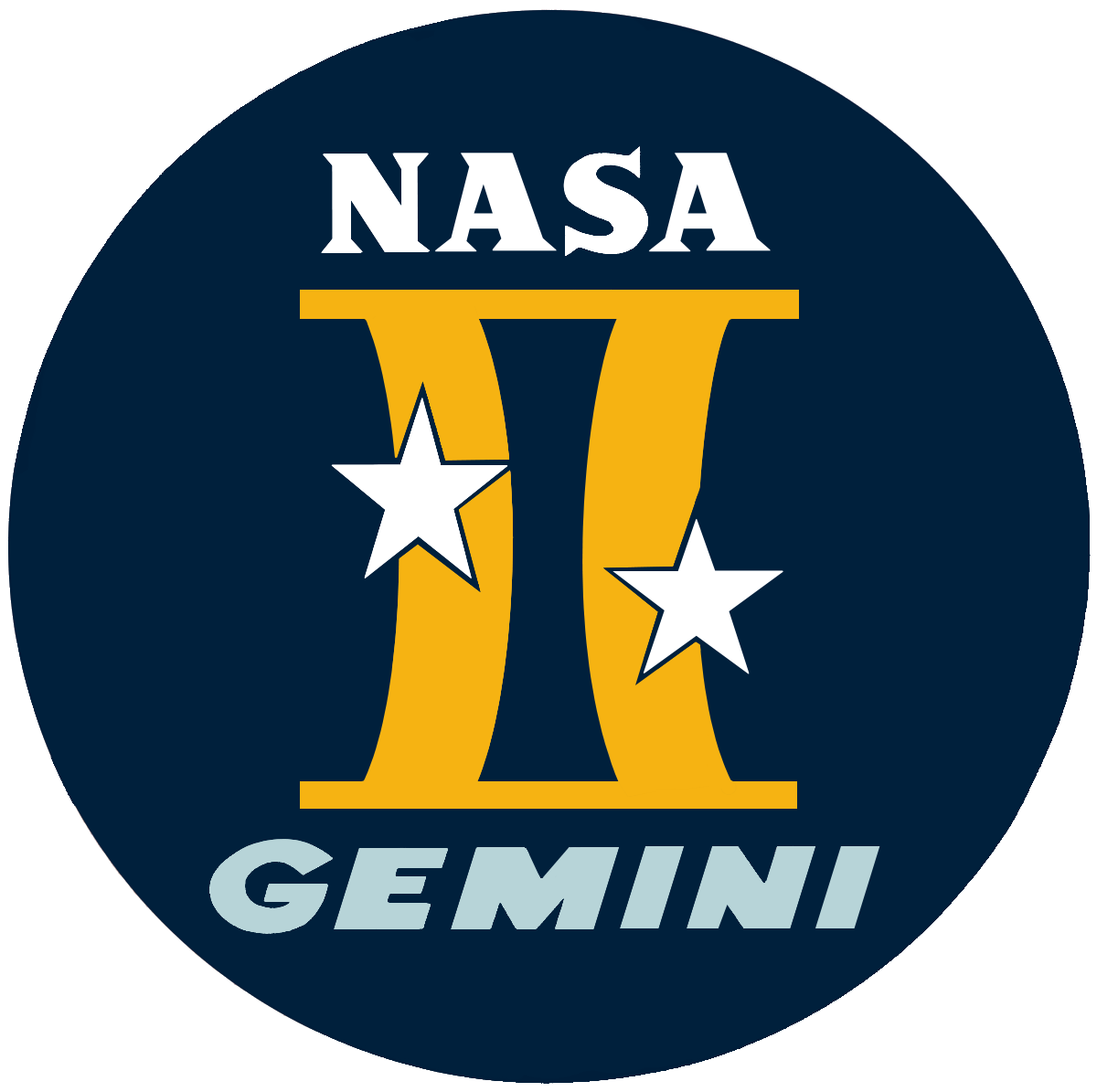 4 December 1965, 19:30:03.702 UTC: At 2:30 p.m., Eastern Standard Time, Gemini VII/Titan II GLV-7 lifted of from Launch Complex 19 at the Cape Kennedy Air Force Station, Cape Kennedy, Florida. On board were Major Frank F. Borman II, United States Air Force, the mission command pilot, and Lieutenant Commander James A. Lovell, Jr., United States Navy, pilot. During the climb to Earth orbit, the maximum acceleration reached was 7.3 Gs.
4 December 1965, 19:30:03.702 UTC: At 2:30 p.m., Eastern Standard Time, Gemini VII/Titan II GLV-7 lifted of from Launch Complex 19 at the Cape Kennedy Air Force Station, Cape Kennedy, Florida. On board were Major Frank F. Borman II, United States Air Force, the mission command pilot, and Lieutenant Commander James A. Lovell, Jr., United States Navy, pilot. During the climb to Earth orbit, the maximum acceleration reached was 7.3 Gs.
Gemini VII was placed into Earth orbit at an initial maximum altitude (apogee) of 177.1 nautical miles (327.8 kilometers) and a minimum (perigee) of 87.2 nautical miles (161.5 kilometers), at a velocity of 16,654.1 miles per hour (26,802.2 kilometers per hour), relative to Earth.
This mission was a planned 14-day flight which would involve an orbital rendezvous with another manned spacecraft, Gemini VI-A. The actual total duration of the flight was 330 hours, 35 minutes, 1 second.
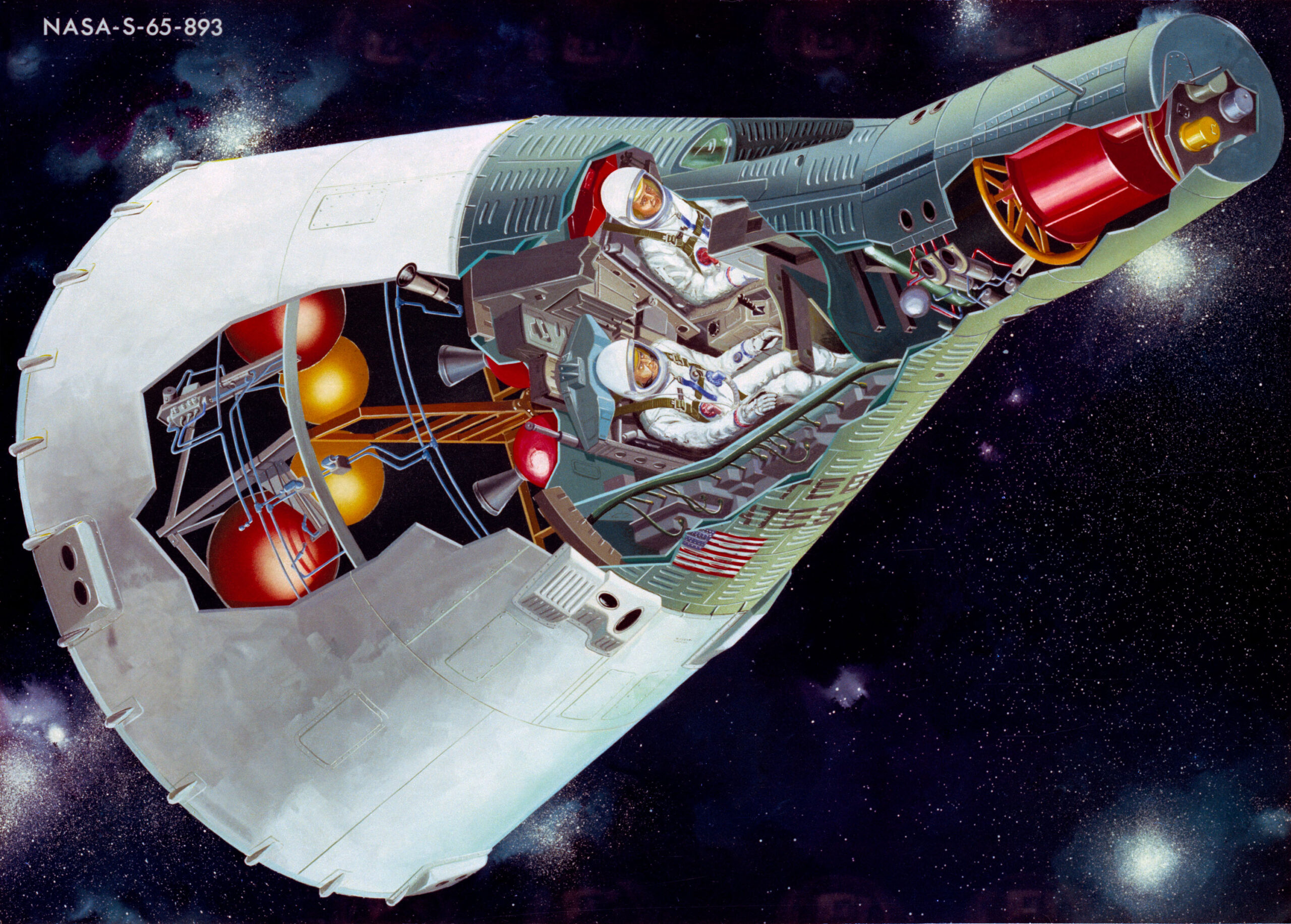
![]() The two-man Gemini spacecraft was built by the McDonnell Aircraft Corporation of St. Louis, Missouri, the same company that built the earlier Mercury space capsule. The spacecraft consisted of a series of cone-shaped segments forming a reentry module and an adapter section. It had an overall length of 18 feet, 9.84 inches (5.736 meters) and a maximum diameter of 10 feet, 0.00 inches (3.048 meters) at the base of the equipment section. The reentry module was 11 feet (3.353 meters) long with a maximum diameter of 7 feet, 6.00 inches (2.347 meters). The Gemini re-entry heat shield was a spherical section with a radius of 12 feet, 0.00 inches (3.658 meters). The weight of the Gemini spacecraft varied from ship to ship. Gemini VII had a gross weight of 8,076.10 pounds (3,663.26 kilograms) at launch. It was shipped from St. Louis to Cape Kennedy in early October 1965.
The two-man Gemini spacecraft was built by the McDonnell Aircraft Corporation of St. Louis, Missouri, the same company that built the earlier Mercury space capsule. The spacecraft consisted of a series of cone-shaped segments forming a reentry module and an adapter section. It had an overall length of 18 feet, 9.84 inches (5.736 meters) and a maximum diameter of 10 feet, 0.00 inches (3.048 meters) at the base of the equipment section. The reentry module was 11 feet (3.353 meters) long with a maximum diameter of 7 feet, 6.00 inches (2.347 meters). The Gemini re-entry heat shield was a spherical section with a radius of 12 feet, 0.00 inches (3.658 meters). The weight of the Gemini spacecraft varied from ship to ship. Gemini VII had a gross weight of 8,076.10 pounds (3,663.26 kilograms) at launch. It was shipped from St. Louis to Cape Kennedy in early October 1965.
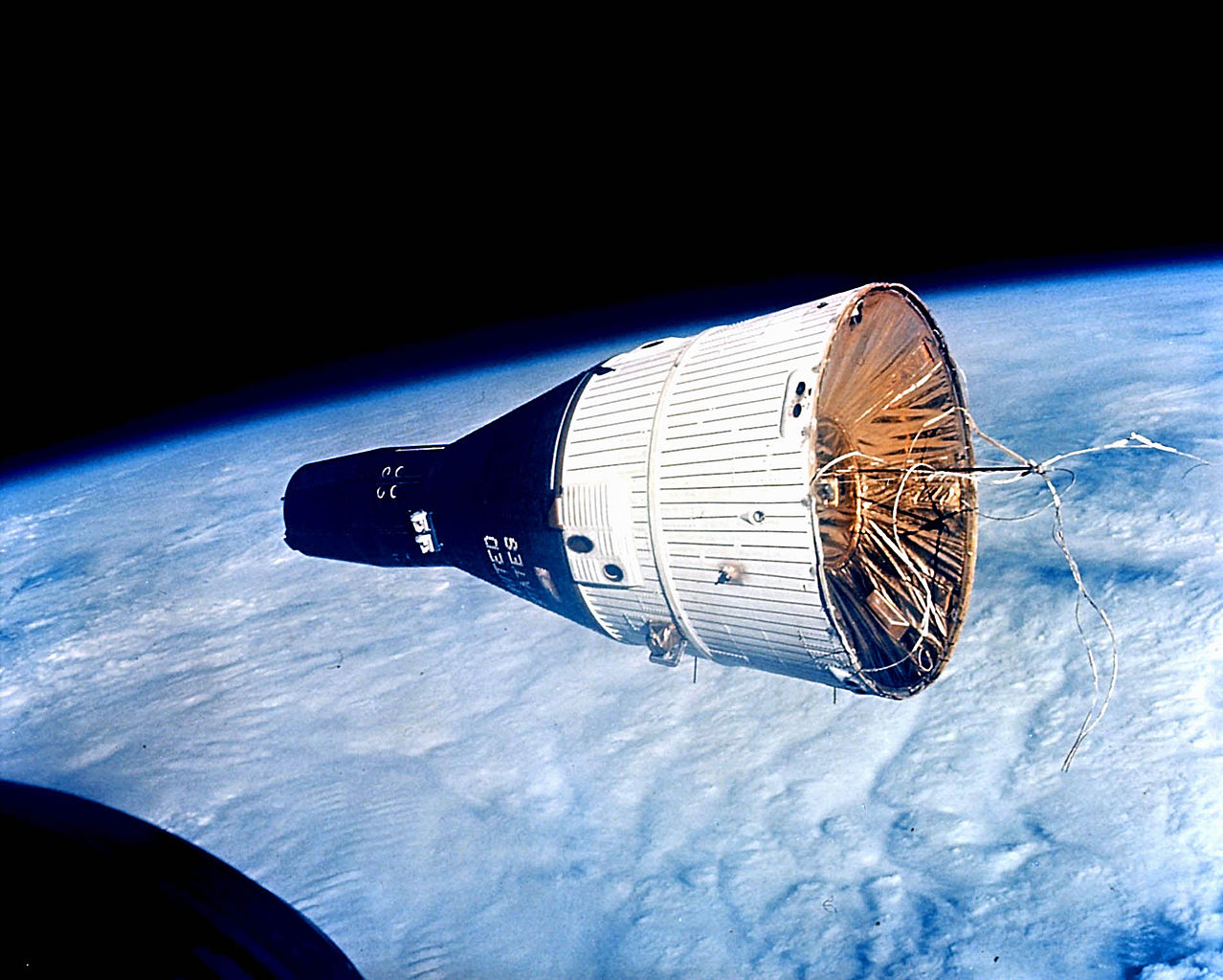
![]() The Titan II GLV was a “man-rated” variant of the Martin SM-68B intercontinental ballistic missile. It was assembled at Martin Marietta’s Middle River, Maryland, plant so as not to interfere with the production of the ICBM at Denver, Colorado. Twelve GLVs were ordered by the Air Force for the Gemini Program. The GLV-7 first and second stages were shipped from Middle River to Cape Kennedy on 9 October 1965.
The Titan II GLV was a “man-rated” variant of the Martin SM-68B intercontinental ballistic missile. It was assembled at Martin Marietta’s Middle River, Maryland, plant so as not to interfere with the production of the ICBM at Denver, Colorado. Twelve GLVs were ordered by the Air Force for the Gemini Program. The GLV-7 first and second stages were shipped from Middle River to Cape Kennedy on 9 October 1965.
The Titan II GLV was a two-stage, liquid-fueled rocket. The first stage was 70 feet, 2.31 inches (21.395 meters) long with a diameter of 10 feet (3.048 meters). It was powered by an Aerojet Engineering Corporation LR87-7 engine which combined two combustion chambers and exhaust nozzles with a single turbopump unit. The engine was fueled by Aerozine 50, a hypergolic 51/47/2 blend of hydrazine, unsymetrical-dimethyl hydrazine, and water. Ignition occurred spontaneously as the components were combined in the combustion chambers. The LR87-7 produced approximately 430,000 pounds of thrust (1,912.74 kilonewtons). It was not throttled and could not be shut down and restarted. Post flight analysis indicated that the first stage engine of GLV-7 had produced an average of 462,433 pounds of thrust (2,057.0 kilonewtons). The second stage was 25 feet, 6.375 inches (7.031 meters) long, with the same diameter, and used an Aerojet LR91 engine which produced approximately 100,000 pounds of thrust (444.82 kilonewtons), also burning Aerozine 50. GLV-7’s LR91 produced an average of 102,584 pounds of thrust (456.3 kilonewtons).
The Gemini/Titan II GLV-7 combination had a total height of 107 feet, 7.33 inches (32.795 meters) and weighed 346,228 pounds (157,046 kilograms) at ignition.
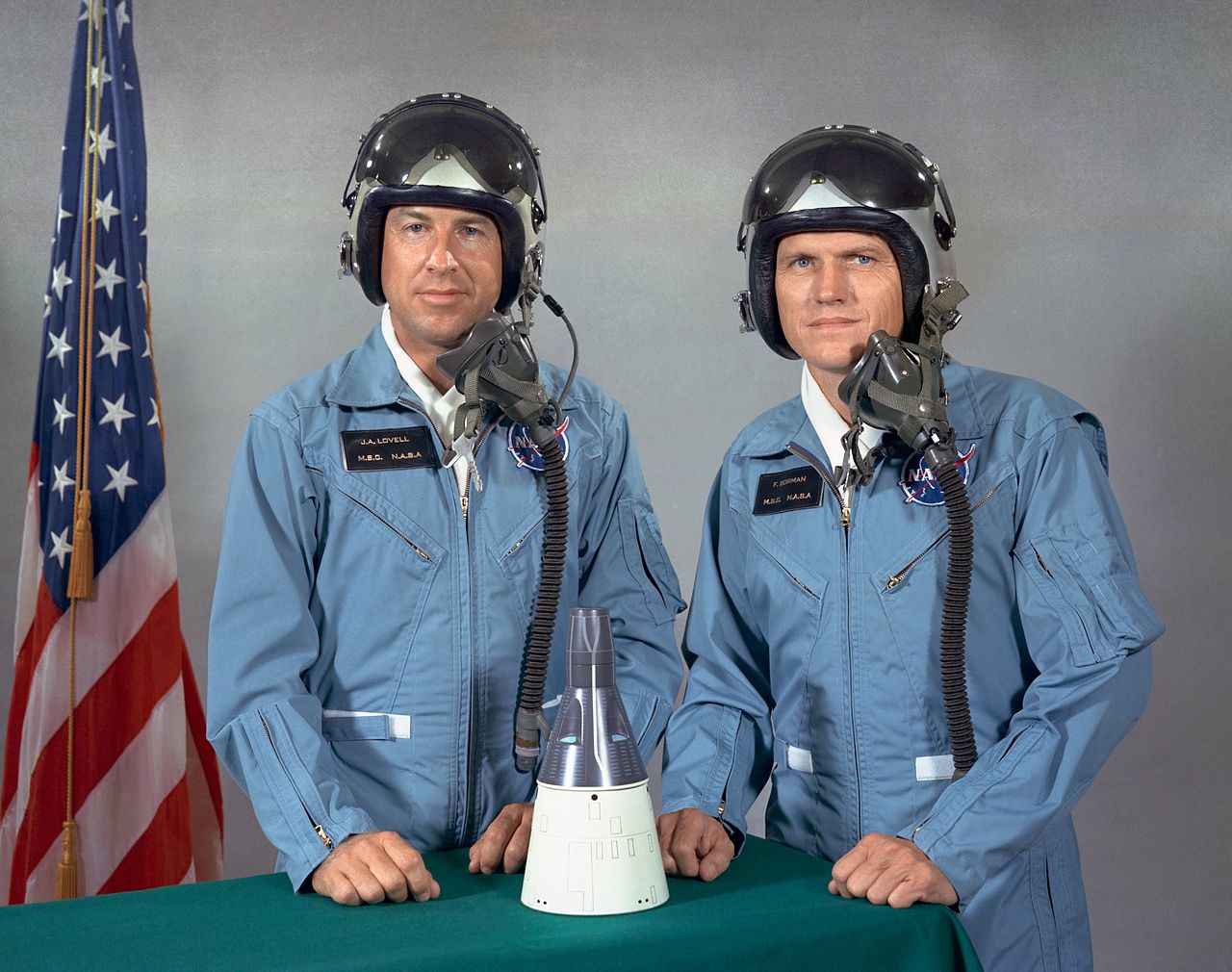
© 2018, Bryan R. Swopes
